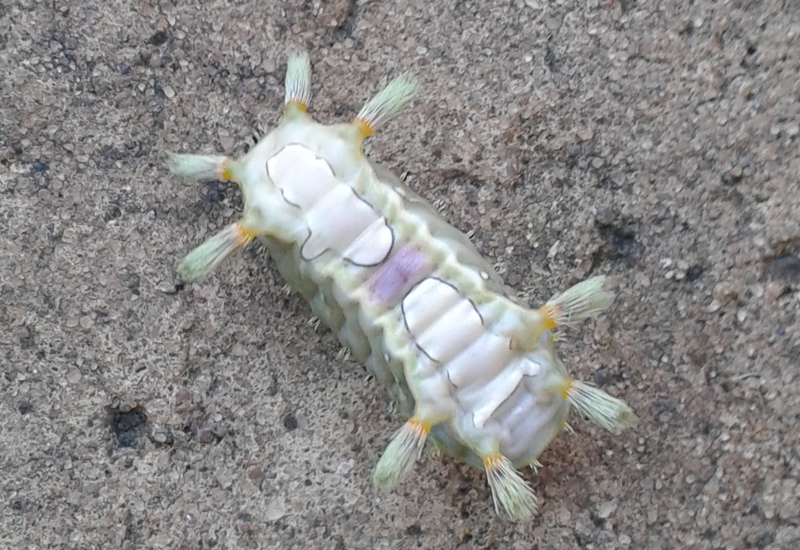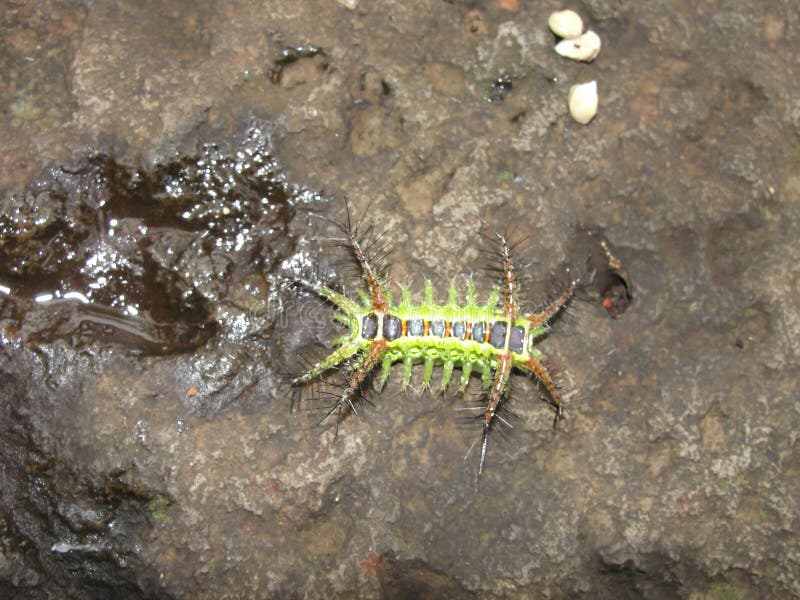
Stinging Rose Slug Caterpillar Stock Image Z355/1232 Science Photo Library
Scientific records show that one sting from the ferocious, little creature can cause extreme pain, nausea, vomiting, acute allergic contact dermatitis, and post-inflammatory hyperpigmentation. G..

Stinging Slug Caterpillar from Zambia What's That Bug?
Slugs tend to lay more eggs after rains, she noted. "This latest rain should get egg laying off to a good start," Leonard said. A good-sized slug can lay as many as 100 eggs in a single clutch.

Top 195 + Stinging slug animal
Most stinging caterpillars are identified by spine or fine hairs covering their body. It is important to remember that caterpillars go through many stages of growth before they become moths or butterflies. This means that immature larvae can look different from caterpillars just before the pupation stage.

Stinging Slug Caterpillars Archives Page 5 of 22 What's That Bug?
The blue glaucus ( Glaucus atlanticus ), sometimes called the blue sea slug (1) or blue ocean slug, (2) is a bizarre-looking marine creature in the group of sea slugs known as nudibranchs. (2,3) Found in the temperate and tropical waters of the Pacific, Atlantic, and Indian Oceans, (2,3,4,5) this slender, (5) up-to-3-centimeter-long (3,5,6) slug.

Stinging Slug Caterpillar in the family Limacodidae Flickr
Fast Facts. Common Name : Blue dragon or blue glaucus. Scientific Name: Glaucus atlanticus. Average Lifespan in the Wild : One month to one year. IUCN Red List Status: Not assessed. Current.

stinging_slug_india_aditya.jpg (800×550) Beautiful bugs, Rock flowers, Colorful animals
Nudibranchia Family Galucidae Genus Glaucus Scientific Name Glaucus atlanticus Read our Complete Guide to Classification of Animals. Blue Dragon Sea Slug Conservation Status Not Listed Blue Dragon Sea Slug Locations Africa Asia Central-America Europe North-America Ocean Oceania South-America Blue Dragon Sea Slug Facts

Limacodid Stinging Nettle Slug Caterpillars Animal & Insect Photos Sinobug
Saddleback caterpillar. 1. Stinging Caterpillar Identification: Acharia stimulea. Also known as the saddleback caterpillar, this species is one of the most common and frequently encountered stinging caterpillars in North America. This species feeds on a wide variety of trees, many of which you may have in your back yard -- hackberry, wisteria.

Stinging Slug Caterpillar from Limpopo, Africa What's That Bug?
Blue Glaucus. The mythical Blue Glaucus, or Glaucus atlanticus as known by its scientific name, is a small-sized blue sea slug species. It has distinctive dazzling blue hues that have garnered it plenty of attention in recent years. These colors have also inspired a series of nicknames, such as blue dragon, sea swallow, and blue angel.

Stinging Nettle Slug Caterpillars Animal & Insect Photos Sinobug
That's a significant omission in a creature known to have one of the largest phallus-to-body-size ratios on the planet. When unfurled, a banana slug's male genitalia can stretch the full body length of a six-inch slug. What's more, like all terrestrial snails and slugs, banana slugs are hermaphroditic. They're all supposed to have all.

Stinging Nettle Slug Caterpillar Animal & Insect Photos Sinobug
Sea Slugs are tiny animals known for their bright colors and intricate patterns.. Many aeolid nudibranchs consume cnidarians—animals with stinging cells like corals and jellies—and can defend themselves by using these stinging cells. From the arctic regions to the tropics, sea slugs can be found anywhere from the shallow intertidal to.

Stinging Nettle Slug Caterpillar Animal & Insect Photos Sinobug
Glaucus survives in temperate and tropical ocean waters. They are usually found in the Indian, Atlantic, and Pacific oceans. Other places where blue dragons are frequently spotted are Mozambique, Big Island, New Zealand water, and Kauai. They are also seen on the shore sometimes after being carried by oceanic currents due to their small size.

Stinging Nettle Slug Caterpillar (Cup Moth, Scopelodes sp., Limacodidae) "Submarine
Glaucus atlanticus is the blue sea slug shown here out of water on a beach, and thus collapsed; however, touching the animal directly with your skin can result in a painful sting, with symptoms similar to those caused by the Portuguese man o' war The slug in the water

Stinging Slug Caterpillars Archives What's That Bug?
The blue glaucus, which is also called the blue dragon, sea swallow, or blue angel, is a brightly colored nudibranch, commonly known as sea slugs. Found throughout the Atlantic, Pacific, and Indian Oceans in tropical and subtropical waters, the blue glaucus grows up to 1.2 inches (3 cm) long.

Pin on Nature!
Banana slugs (Ariolimax columbianus) can vary in color from bright yellow to dark yellow, as well as mixtures of brown, black, white, and green. Many even have dark brown or black spots! These slugs have a smooth head and a smooth body. Many boast a distinct ridge that runs along the length of the back. Color varieties of European Slugs.

Stinging Slug Caterpillars Archives What's That Bug?
A rare and potentially dangerous "blue dragon" sea slug has been found on a beach in Texas. Footage showing the tiny creature was taken by Erick Yanta. In the video, Yanta can be seen holding a.

Phidiana Hiltoni, snacking on Stinging hydroids by Gayle Van Leer (it has such a cute little
Blue dragons are also known as the blue sea slug, blue angel, dragon slug, and even sea swallow. They're vivid blue, which may help protect these water surface-dwellers from UV light and provide important camouflage. They also sport six feathered appendages from their body, and hunt down some of the more venomous animals in the ocean for lunch.